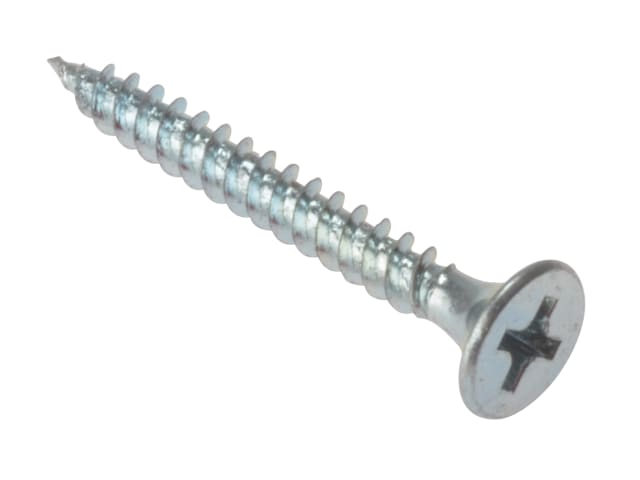What Are The Different Types Of Screw Heads And Their Advantages?
The screw head is a major factor in choosing the right screw for your application. Understanding the different screw head types and what they provide can save you time and cost, prevent damage to what you are working on and save you an awful lot of frustration.
What is the purpose of a screw head?
Essentially, the screw head dictates the type of tool you would use to drive in the screw. This in turn will influence how easy the screw will be to fasten and therefore what material you would ordinarily use it on, and how strong the connection will be. It is possible to use more than one screw head for a certain application, but one will be more suitable than another, and there will be a variation in how easy the screw is to fasten and how secure the fastening will be over the long term. Therefore, it is important to get advice and use the correct screw head for the application you are working on.
Different types of screw head design
The screw head design will differ according to its function, but generally there are two different types of screw head:
- Countersunk – These are screw heads which sit flush to a surface when fully fastened, or sit slightly below the surface. A countersunk screw will have a tapered head, which means it is angular underneath the head where it joins the shank.
- Non-countersunk – A non-countersunk screw will sit proud of the surface when fully fastened, meaning it is always visible. There are more head shapes for non-countersunk screws and the heads are not tapered.
In terms of fastening designs, screws usually fall into two categories, either a Phillips screw or a slotted screw.
- Phillips – This is probably the most popular type of screw head, and is shaped in a cross design. Most cordless screwdrivers use this cross design as the four points of contact provide more force and hence the application is more stable and secure. Phillps screws usually have a pointed tip and are tapered. Phillips screw heads are sometimes called posidrive screws.
- Slotted – The slotted screw is not as popular as it used to be, mainly because it is fastened using a manual flat head screwdriver. The design is simple with a single line across the top of the head, in which a hand-driven screwdriver is inserted. Because these are manual screws they are better for applications where little torque is required. However, because this is a manual application the screw can be harder to stabilise when driven into the material.
The most popular types of screw head
Screw heads come in many different shapes and sizes for more specialist applications, such as binder, pan, fillister, flat, hex, oval, Truss, socket cap and socket button. However, the most popular types of screw head are as follows:
- Flat head – These are countersunk screws which sit flush to a surface and hence are used often for aesthetic purposes where you want a smooth finish. So these are popular for woodworking, handrails and furniture where you want to avoid snagging points. They are also popular for fixing plasterboard, because you can plaster over the screw head and it is not visible. Because flat head screws are not often used for heavy duty applications, they are often slotted. However, the slotted head does limit the amount of torque which can be applied, so a flat head fastening will be less secure. Some flat head screws can have a Phillips head.
- Hex head – The hex head screw is usually installed using a wrench and in a tapped hole. The six points of the hex head allow more torque to be applied and hence this is a better screw for more heavy duty applications such as machinery and equipment, this higher torque strength also means the screw can withstand prolonged vibration. Hex head screws are non-countersunk and so the head will protrude from the surface, however, this does mean they are easier to tighten or remove as necessary.
- Oval head – The oval head screw is usually a Phillips/cross-headed screw and is used heavily in architecture such as handles and hinges. It is also used widely in the automotive industry for securing body panels, and for electrical items such as switch covers. The domed head shape provides quite a large surface area which therefore requires more force to drive the screw in.
- Socket head – Often referred to as a cap head screw, this is a screw which allows for high torque and a strong clamping force. The circular head has a hexagonal drive on top for an Allen key. This is useful where space is limited but you still need a high strength fixing. The socket head is popular in assembly lines, automotive and machine tooling. It resists tampering and the good clamping force often means that less screws are needed, which reduces costs, but this is balanced out by the fact that the more complex design usually means the socket head screw is slightly more expensive.
Contact MB Direct for advice on the right type of screw heads
Choosing the right screw head is critical to the success of your application, so you should take expert advice on making the right choice. Contact our team at MB Direct and we can advise on the best options from our vast range of screws.